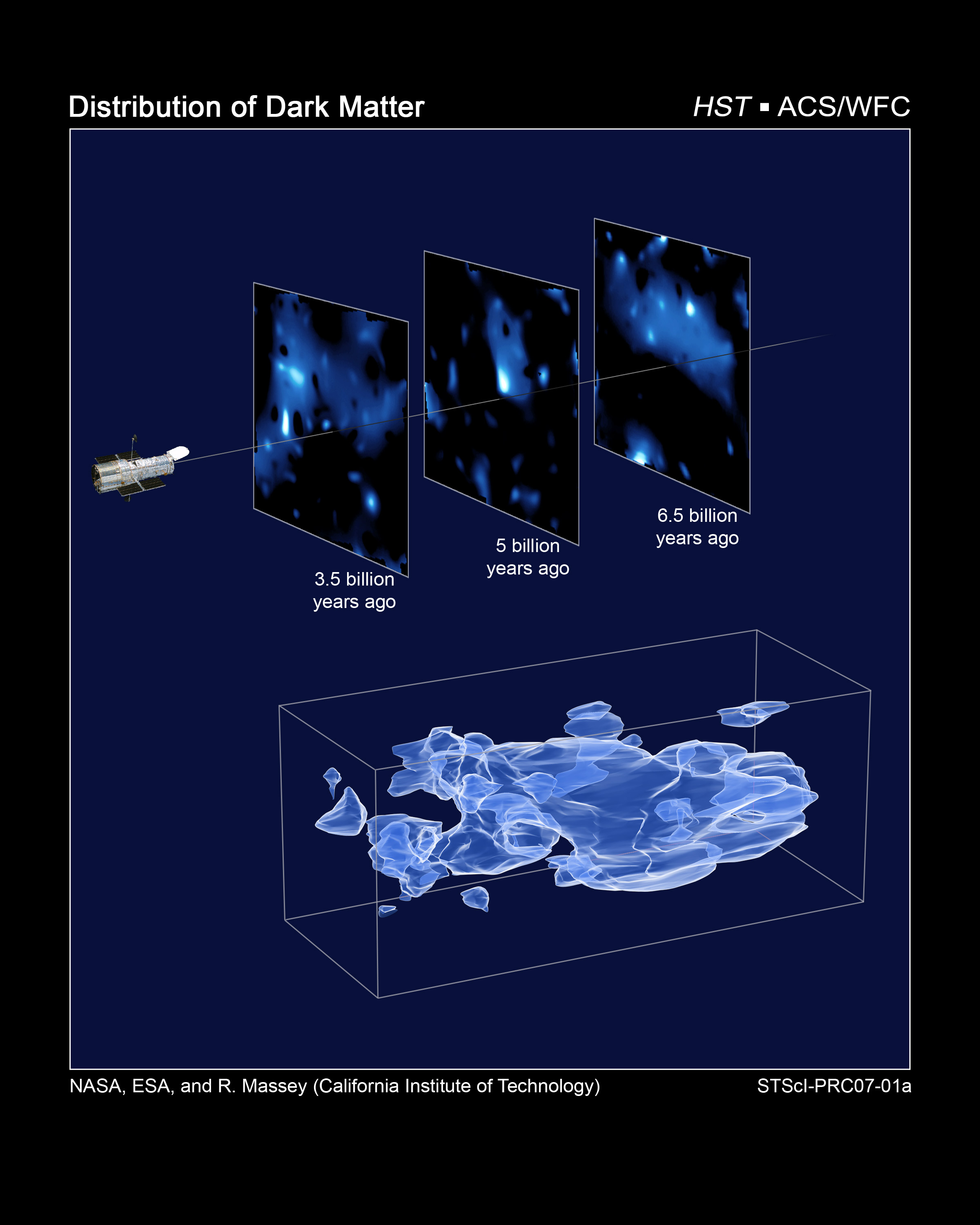WIMPs are Weakly Interacting Massive Particles, hypothetical particles which may be the main (or only) component of Dark Matter, a form of matter which emits and absorbs no light and which comprises approx 75% of all mass in the observable universe.
The ‘weakly’ is a bit of a pun; WIMPs would interact with themselves and with other forms of mass only through the weak force (and gravity); get it? More plays on words: WIMP, the word, was created after the term MACHO (Massive Astrophysical Compact Halo Object) entered the scientific literature.
WIMPs are massive particles because they are not light; they would have masses considerably greater than the mass of the proton (for example). Being massive, WIMPs would likely be cold; in astrophysics ‘cold’ doesn’t mean ‘below zero’, it means the average speed of the particles is well below c. Neutrinos are weakly interacting particles, but they are not massive, so they cannot be WIMPs (besides, neutrinos aren’t hypothetical, and they’re hot, very hot … they travel at speeds just a teensy bit below c).
Or maybe they are … if there is a kind of neutrino which is really, really massive (a TeV say) then it would certainly be a WIMP! However, the latest results from WMAP seem to rule out this kind of WIMP-as-neutrino.
There are quite a few experiments – active or planned – looking for WIMPs; some Universe Today stories on them are New Proposal to Search for Dark Matter, Searching for Dark Matter Particles Here on Earth, Digging for Dark Matter, the Large Underground Xenon (LUX) Detector, and A Prototype Detector for Dark Matter in the Milky Way. It may turn out that WIMPs remain entirely hypothetical (the particles which comprise Dark Matter may not be WIMPs, for example) or only a minor component of Dark Matter. In the latter case they’d follow MACHOs not only because they were named at a later time … MACHOs have been detected in the Milky Way halo, but there aren’t anywhere near enough of them to account for the rotation curve of our galaxy.
This section of a review by Princeton University’s Dave Spergel is rather old but still one of the best concise technical descriptions; and this Particle Data Group review (PDF file) lists WIMP searches (though it’s a bit dated). NASA’s Imagine the Universe! has a page on Possibilities for Dark Matter that includes a simple overview of WIMPs.
Want to hear, rather than read, more? Check out the Astronomy Cast episode The Search for Dark Matter!
Source: NASA

